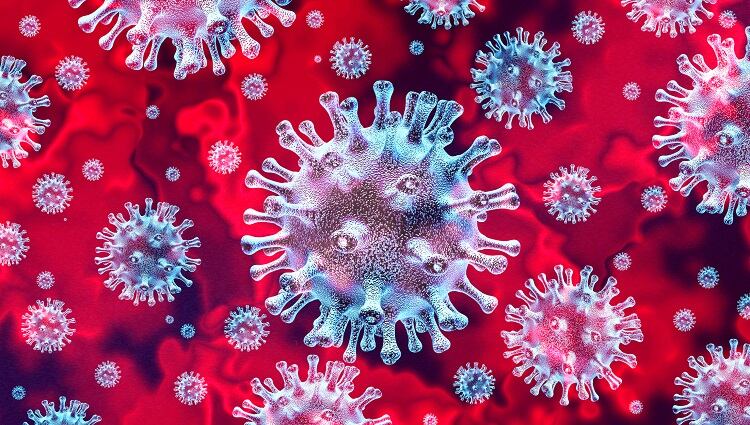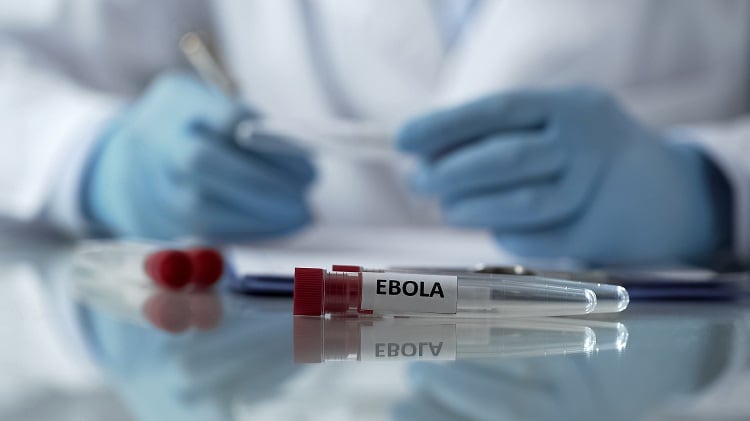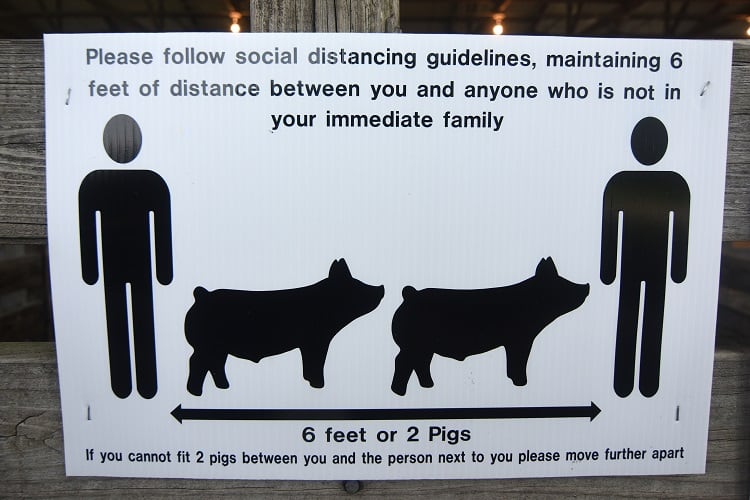Last month, ProVeg International published a report looking at pandemics – such as the current COVID-19 – and the animal-based food system.
According to the not-for-profit, which aims to halve global animal consumption by 2040, there is an ‘often overlooked connection’ between the two. The report’s conclusion? That intensive animal farming is the ‘single most risky human behaviour’ for pandemics.
Yet Tamas Bakonyi, who heads up the European Centre for Disease Prevention and Control’s (ECDC) Food and Vector Borne Disease Programme, believes animal farming is not ‘the single’, nor ‘the most important’ component.
The European Livestock and Meat Trading Union has also contested the report’s findings. “Pointing the finger at farming is…not the solution,” Secretary General Karsten Maier told FoodNavigator.
‘Factory farms are perfect breeding grounds for future pandemics’
ProVeg’s report focuses on zoonotic diseases transmitted from animals to humans. COVID-19 is one such disease, as are SARS, MERS, Ebola, rabies, and certain forms of influenza.
In fact, about 75% of all emerging infectious diseases in humans are zoonoses. “Whether originating in wild animals, as is assumed with COVID-19, or in farmed animals, as is the case with avian and swine flu, they all pose serious threats to individual and global health – and already cause more fatalities than diabetes and traffic accidents combined,” noted the report.
According to ProVeg, mounting evidence suggests that the increase in zoonotic events is directly linked to humans’ increasing interactions with animals, particularly in terms of food sourcing.
“Our appetite for meat, eggs, and dairy has brought us into ever-closer contact with both domesticated and wild animals by keeping even more of them in increasingly confined spaces and invading even more of their habitats.
“Together with the human modification of the environment, this increases the likelihood of viruses jumping the species barriers, resulting in new zoonotic diseases.”

The report goes on to list three human activities that increase the risk of zoonotic pandemics: the destruction of ecosystems and loss of biodiversity; processing and consuming wild animals as food; and the farming, processing, and consumption of domesticated animals as food.
“The recipe for disaster is surprisingly simple: one animal, one mutation, one human, and a single point of contact,” said ProVeg’s International Director and report author Jens Tuider. While the origins of COVID-19 have yet to be confirmed, there is ‘no uncertainty’ regarding swine flu and avian flu. “Those viruses evolved on factory farms, where conditions are perfect for the evolution and transmission of viruses…
“Factory farms are perfect breeding grounds for future pandemics.”
The report concludes that using animals as food – and intensified animal agriculture in particular – is the most risky human behaviour in relation to pandemics.
ECDC: Livestock farming ‘definitely not’ the single most risky behaviour
ECDC’s Bakonyi agrees with certain elements of ProVeg’s report. As human populations grow, for example, so do does demand for protein sources, and this leads to more intensive farming practices.
“These domesticated animals are kept together in high population density,” he told FoodNavigator. “If you compare this density [with that of] the ancestors of [laying hens] found in the jungle – where you would find a few birds per square kilometre – to today’s industrial poultry farming, [you would observe] there are now tens of thousands of birds kept together in one stable.
“So that provides a much higher chance for the spread of pathogens…for the spread of viruses or salmonella…or for so many of those agents which subsequently may cause disease in humans.”
Transmission from animals to humans is ‘indeed an important factor’, the food- and vector-borne expert continued, but global changes must be taken into consideration.
The growth of human populations also implies that civilisation is expanding and people are occupying greater areas in nature. “That increases the interface between people and wild animals,” said Bakonyi. “And that gives the opportunity for an increased number of transmissions of animal diseases which did not have contact with humans before.”
The outbreak of Ebola in West Africa is one such example. The virus is thought to have come from bats or primates. Whichever the animal, a higher frequency of contact between animals and humans means an elevated chance of human infection.

Growing populations and human density also means that once a virus infects a human, there is a greater chance of that agent being spread within communities. Travel plays a significant role here, and did so amid the recent Ebola outbreak, Bakyoni explained.
“The initial trigger can be that there is a transmission from wild animals to humans, but [whereby] the agent is spreading rapidly, and globally, [it can be] connected to human movement [such as] travelling, and in certain instances, travelling in groups.” COVID-19 is another strong example of this.
The Food and Vector Borne Disease Programme lead concluded that ‘livestock farming is definitely not the single most risky [factor]’, citing ‘many other risky…activities, such as deforestation, land use and other agricultural activities, and the transportation of goods’. But first and foremost, ‘the very intensive travel of people’.
In the case that the virus is a pathogen which can cause disease in humans, and there is the potential for human to human transmission, ‘then the most important and most significant human activity is…international travel’, he continued. “Because it’s not the animals – not the wild animals or livestock – that are travelling all around the world, but the people. And the people are carrying and transmitting these agents.”
“Animal farming is an important component, but it is not ‘the single’ and not even ‘the most important’ component” – Tamas Bakonyi, ECDC
‘Pointing the finger at farming is not the solution’
The European Livestock and Meat Trading Union (UECBV) similarly pointed to travel and growing human populations as risk factors.
In a perspective written by Dennis Carroll et al. in 2018, published in a WHO Bulletin, the authors write: “Global trends indicate that new microbial threats will continue to emerge at an accelerating rate, driven by our growing population, expanded travel and trade networks, and human encroachment into wildlife habitat”. As UECBV’s Maier pointed out, this list ‘does not mention farmed animals’.
While the Secretary General concedes that a significant percentage of infectious diseases are of zoonotic nature, he told FoodNavigator it is also true that the majority of these diseases in humans mostly originate in wildlife (e.g. Ebola, Zika, SARS, HIV etc).
Further, risk-prone areas have been ‘clearly identified’, and these are ‘generally forested, tropical regions, where wildlife biodiversity is high and there are changes in land use’. “This is referred to as ‘habitat encroachment’, with human settlement, extraction industries, and uncontrolled agricultural expansion playing a role’, Maier continued, mirroring points made by both ProVeg and Bakonyi.
The International Animal Health Organization (OIE) recognises the repeated emergence of zoonotic diseases and the linkages of some of these along the value chain of the wildlife trade, we were told.
Given these associations, the Secretary General is convinced that ‘pointing the finger at farming…is not the solution’. “From our end, we must – and we will – continue to develop and promote biosecurity and disease prevention, supporting research, early detection and identification as essential mechanisms, focusing on the right places.”




